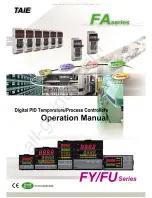
SATEL ACU-270
17
2
nd
digit – type of acoustic signaling: 0 (disabled), 1 (sound type 1), 2 (sound type 2) or 3
(sound type 3).
3
rd
digit – optical signaling: 0 (disabled) or 1 (enabled).
ASW-100 E
/
ASW-100 F
– enter 0 (only remote control of the electric circuit); 1 (remote or
manual control of the electric circuit) or 2 (remote or manual control of the electric circuit,
but with option to manually block the remote control).
LCD keypad
You can configure the wireless devices in service mode, using the following functions: U
SE
ARU-100, A
CTIVE MODE
, C
ONFIGURATION
and F
ILTER
(
S
TRUCTURE
H
ARDWARE
E
XPANDERS
S
ETTINGS
[controller name]
). Having started the function, use the
and
keys to select
the zone to which the wireless device is assigned and press the key.
Use ARU-100
Using the
and
keys select whether the wireless device is to communicate to the
controller directly, or via a selected repeater (the name of the zone to which the repeater is
assigned is displayed on the list).
Configuration
Use the arrow keys for programming additional parameters and options. The values which
can be programmed for individual parameters of wireless devices are presented in the
section describing configuration of the devices by means of the DLOADX
program.
6.3.3 Programming in the VERSA / VERSA Plus / VERSA IP system
DLOADX program
You can configure wireless devices in the “Versa – Structure” window, “Hardware” tab, after
clicking on the controller name in the list of devices. Proceed in the same way as when
programming in the INTEGRA / INTEGRA Plus system. Before making any changes, click on
the “Read” button, and after making the changes – on the “Write” button (the data relating to
the wireless devices are not read after clicking on the
button or saved after clicking on
the
button in the DLOADX program main menu).
LCD keypad
For information on configuring wireless devices from the LCD keypad, please refer to the
VERSA / VERSA Plus / VERSA IP control panel programming manual.
6.4 Specific character of the operation of wireless devices
This chapter describes the peculiar character of the operation of individual groups of wireless
devices, which affects the method of programming the zones and outputs to which the
wireless devices are assigned.
6.4.1 Wireless detectors
The wireless detectors send information on violations, tampers and low-battery status. The
information on violations and tampers is sent to the zones to which the detectors are
assigned. You can program these zones as:
NC, NO or EOL – the zone will inform about detector violation;
2EOL/NC or 2EOL/NO – the zone will inform about detector violation and tamper.









































